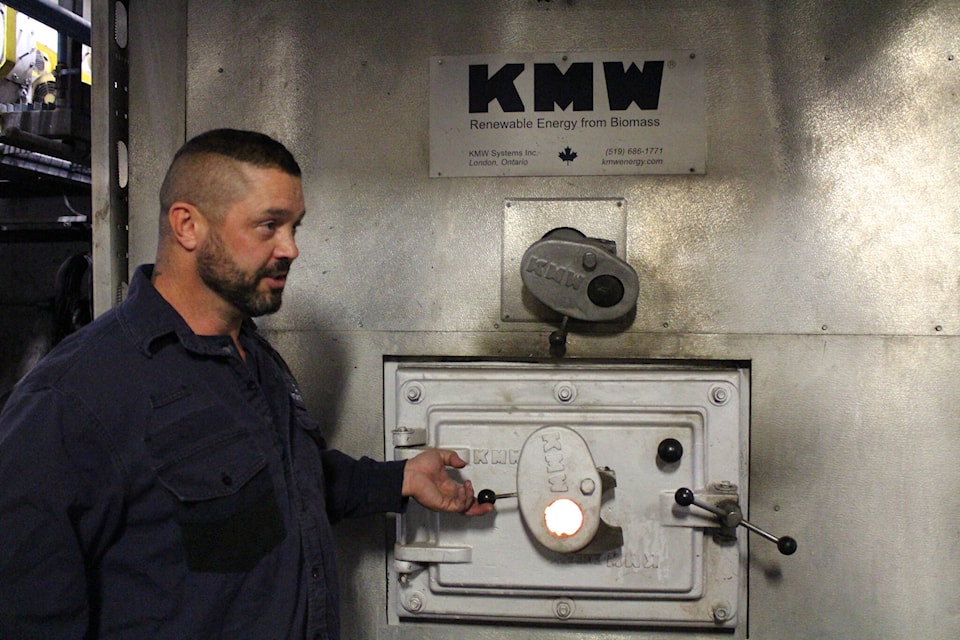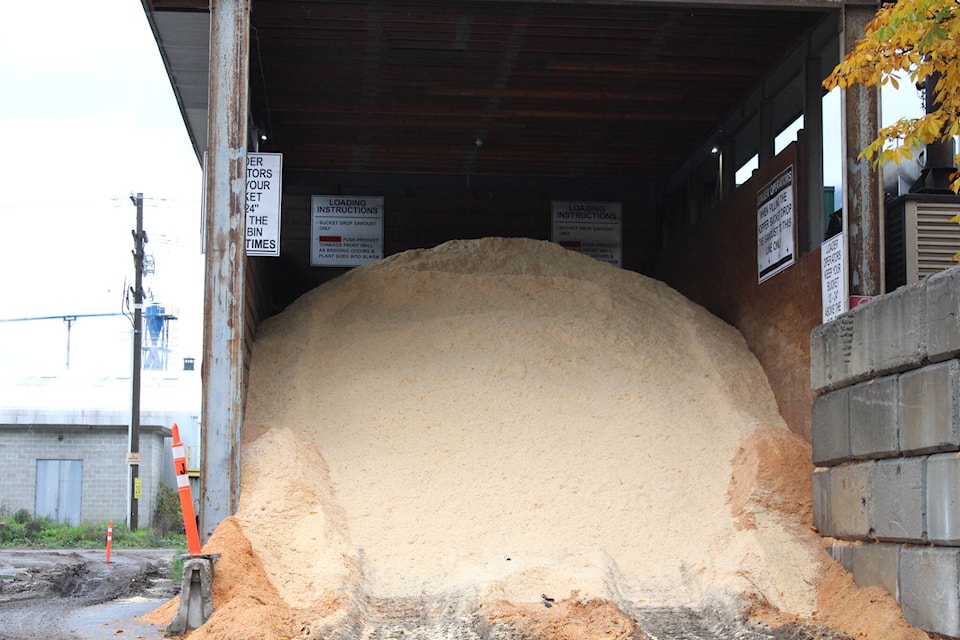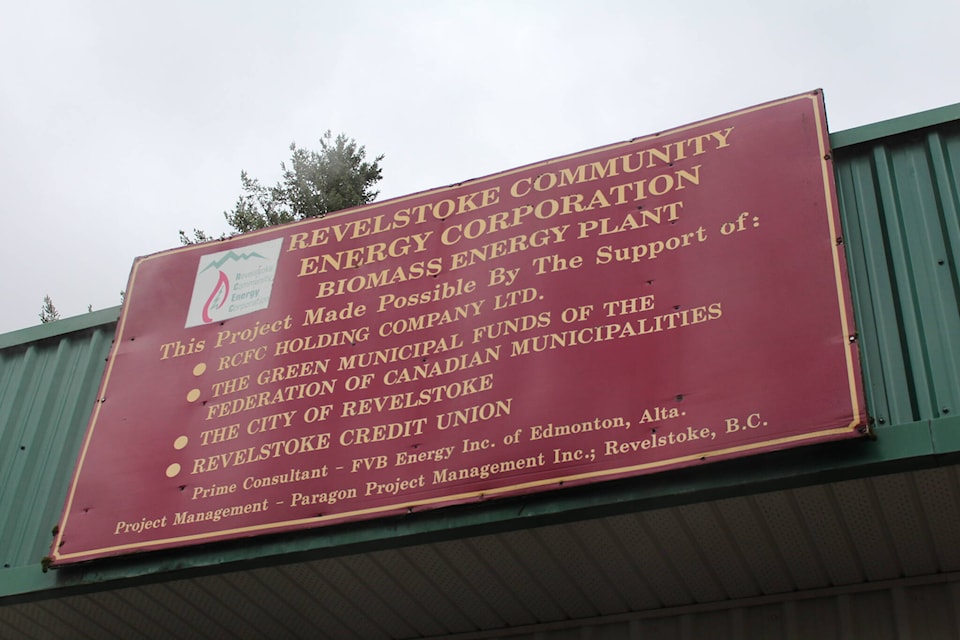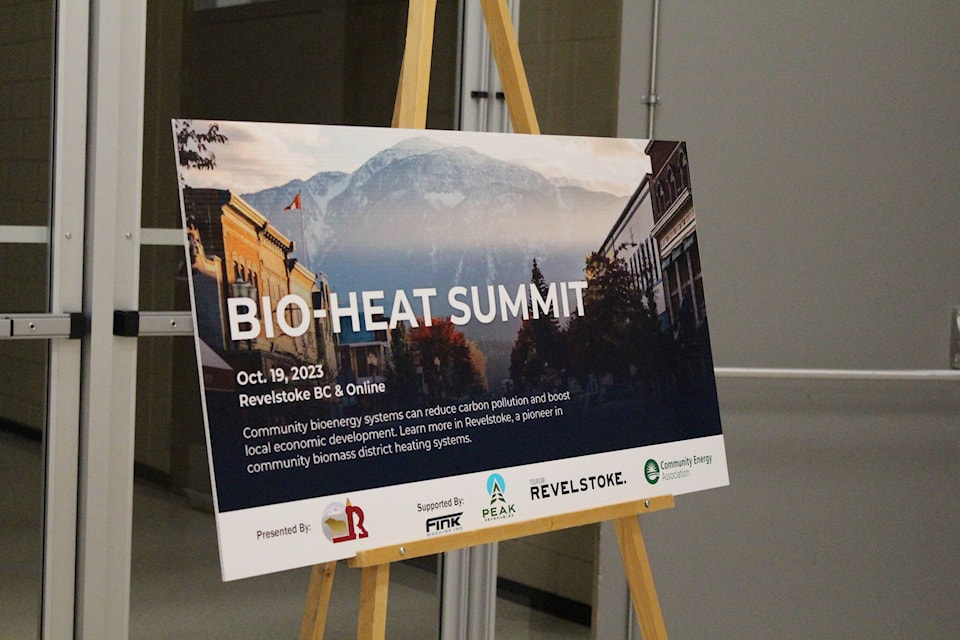Sitting in the Revelstoke Community Centre on the evening of Oct. 19, roughly a dozen bio-energy experts and enthusiasts sat comfortably in a bio-heated facility for Revelstoke’s first-ever Bio-Heat Summit.
“This is not an easy venture and the whole point of tonight and the theme of tonight is really twofold: education and solutions,” said Revelstoke Chief Administrative Officer (CAO), Evan Parliament at the beginning of the evening.
Throughout the day on Thursday (Oct. 19), Revelstoke hosted its first bio-energy summit. Starting with a tour of Revelstoke’s Community Energy Corporation (RCEC) facility, followed by an event in the evening at the Revelstoke Community Centre. The summit brought industry experts and local government together to explore how bio-energy has changed in Canada since Revelstoke’s early entry into the field in 2005.
As the summit got underway with the tour of the RCEC facility. Attendees met the RCEC General Manager, Larry Marchand, and plant operator, Dennis Doyle. Doyle is almost single-handedly responsible for maintaining Revelstoke’s bio-energy system, which services eight buildings in the city.
“I take a sense of pride in it,” he said, adding “It gives me a sense of accomplishment.”
Doyle’s work is highly specialized. His overlapping experience in the oil and gas industry, plumbing, and steam systems were among the qualifications that earned him the position. With such a complex background, Doyle is one of the only people who can look after the entire facility, putting him on call 24/7. He recalled last winter when the weather dipped below –25 C, requiring him to work through the holidays.

“Through the Christmas holidays, I didn’t really sleep from the [Dec] 22 to the 28.”
The heat produced at the plant and overseen by Doyle traverses underground through a network of 2.5 kilometres of pipe into eight community buildings, including the Revelstoke Forum, two schools, the post office building, the community/aquatic centre and more.
Revelstoke’s foray into bio-energy started in the 1980s when the writing on the wall showed that the changes to the forestry industry at that time were going to have lasting impacts, and the city needed to adapt. When the city became the sole owner of the Revelstoke Community Forest Corporation, its success allowed the town to invest in projects that would help the community well into the future, including the founding of the Revelstoke Community Energy Corporation.
Larry Marchand, RCEC General Manager, commended Dr. Jeff Battersby who was both the Mayor of Revelstoke at the time and the chairman of the RCEC, for his relentless work in getting the project up and running.
Marchand explained that the facility uses roughly 4,000 metric tons of waste residue annually and converts it to, “10,000 megawatt hours of district energy and steam.”

The problem with being a leader in technology-driven fields like bio-energy is that it doesn’t take long before the tech is outdated.
While the RCEC system and Doyle’s work to maintain and operate it is nothing short of impressive, it is still an older and less efficient system when compared to newer ones.
David Dubois was partially responsible for getting one of the latest bio-energy systems set up in Canada, which was coincidentally located down the highway from Revelstoke in Sicamous. Dubois works with Fink Machines, which builds and installs bio-energy systems across Canada.
“We literally go from sea to sea to sea,” said Dubois.
Fink’s system in Sicamous, Dubois explained, uses hot water rather than steam, which is both easier to operate and more efficient.
The summit also allowed attendees to see the way that bio-energy systems are used in other parts of the world.
Fred Spinola from Peak Renewables showed everyone bio-energy systems in Prince George, Germany, and South Korea. The latter included an entire planned community in Hanam built on top of a bio-energy facility that was three storeys below the ground and provided enough energy for the whole community. From apartment buildings to industrial facilities, a bio-energy system provides enough energy for everyone using otherwise wasted materials.
After presentations that got attendees looking to the future, CAO Parliament re-grounded the topic in some of the tangible issues that threaten the local facility.

“This is the challenge that we have at the city because it’s a public utility,” said Parliament.
Parliament explained that currently, the RCEC generates a little more than $700,000 annually, but that the facility would have to generate roughly $1 million in revenue to offset the $3 million in infrastructure renewal that the facility needs.
Understanding the various systems and limits of bio-energy was part of the goal of the summit. As the city moves forward and weighs the benefits of the RCEC system with its cost, it can do so now with a better understanding of what bio-energy looks like around the world. Whether it’s 40 minutes down the highway or thousands of kilometres around the world.
READ MORE: Revelstoke Golf Club finishes another season on par
